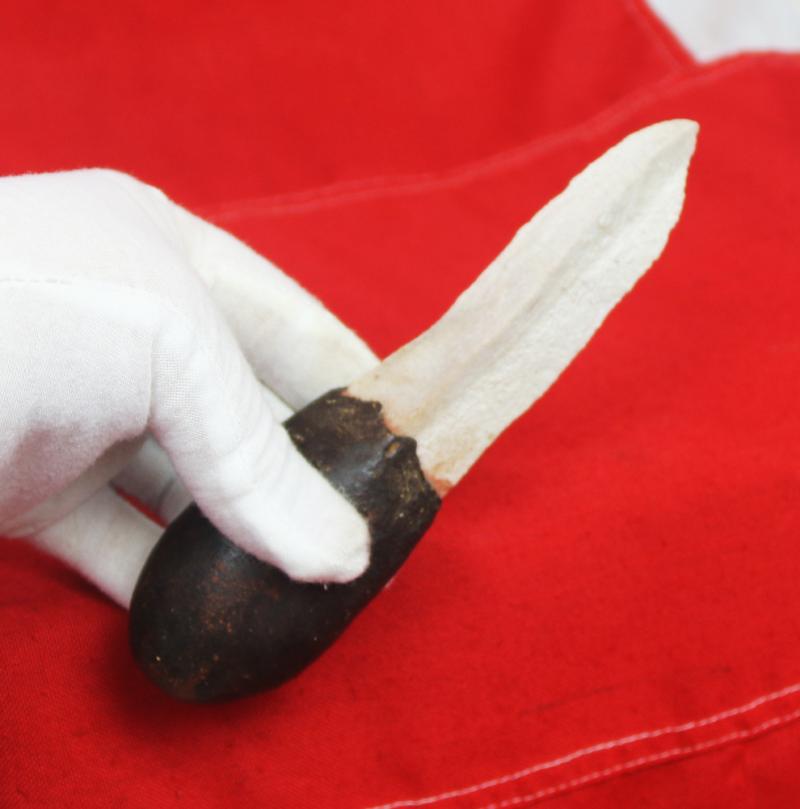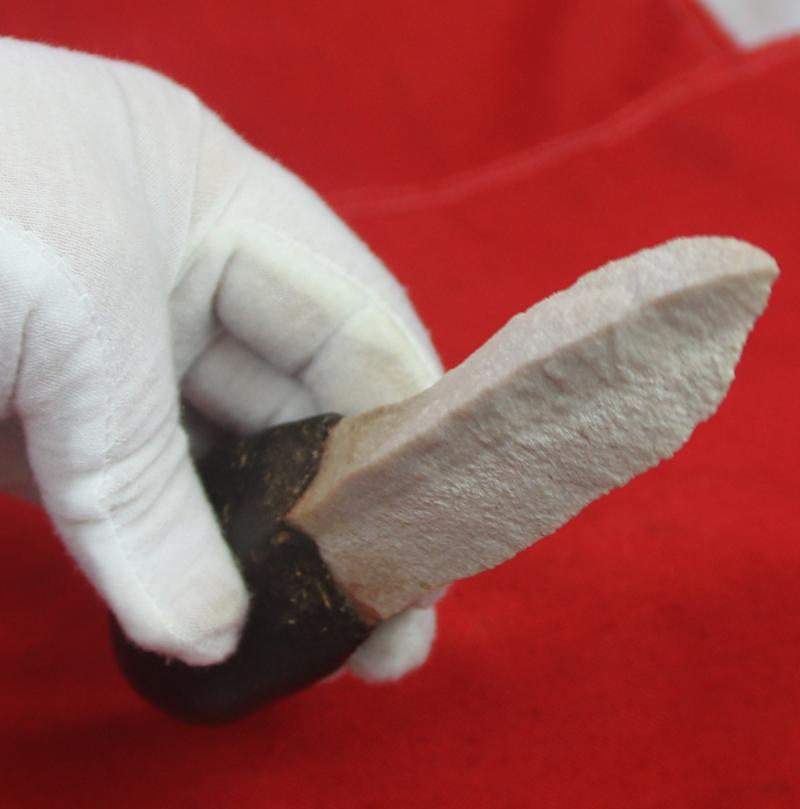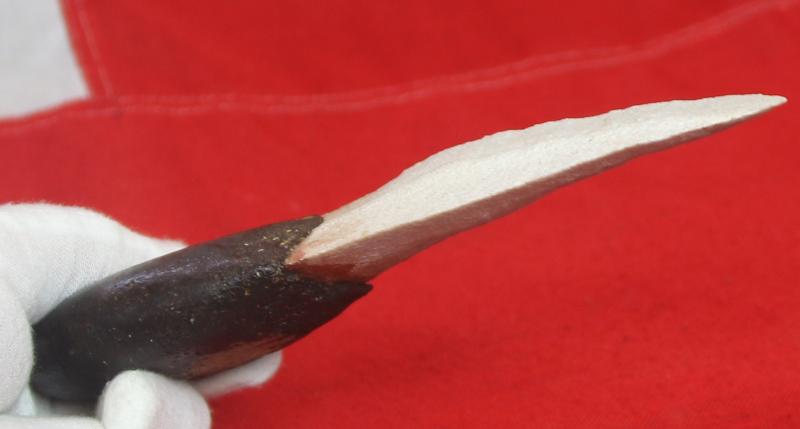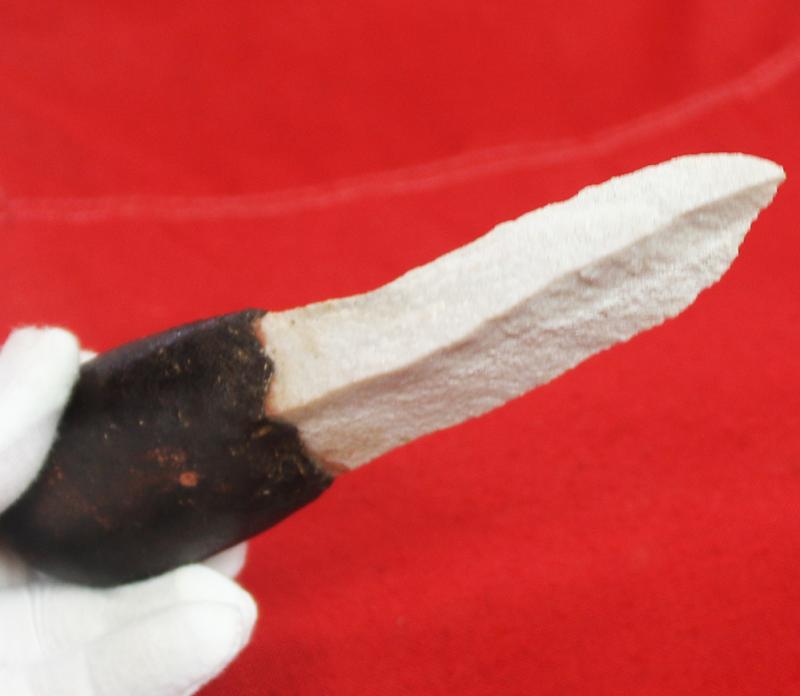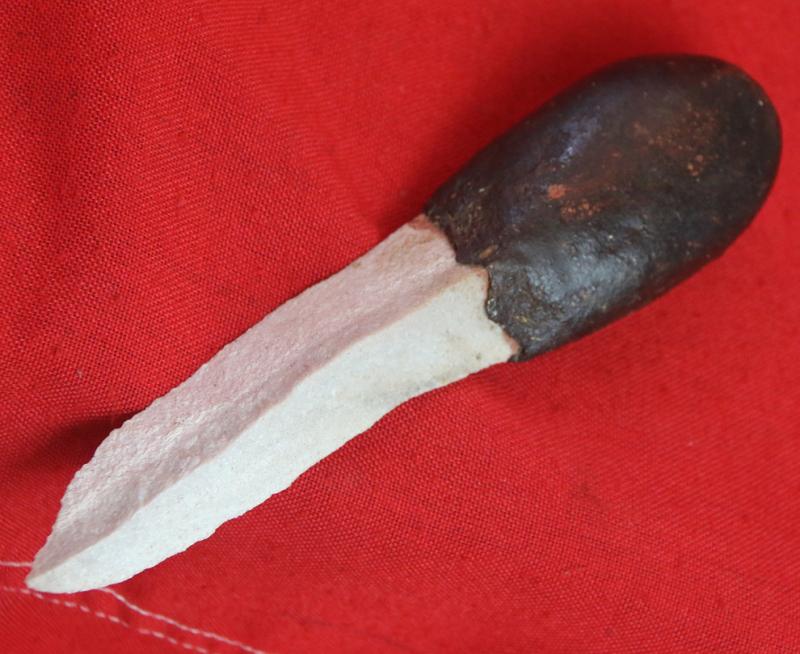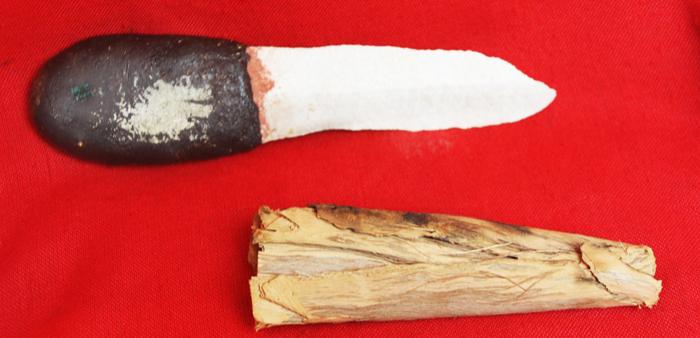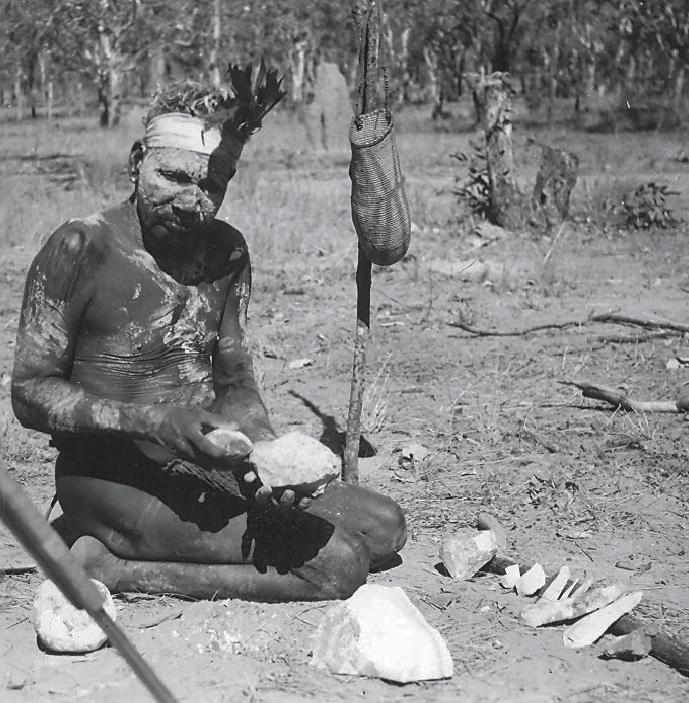Excellent Pre-Contact Example of a Stone Leilira Knife from Central or Northern Australia. A First Nations' Cultural Object
The handle made of Spinifex Resin (plant) and the quartz blade shaped by chipping and shaping with a harder stone. The term Leilira was first coined by Spencer and Gillen circa 1899, and is currently the archaeological term used to describe large blades produced in northern and central Australia."--------2006, Kevin Tibbett, "When East Is Northwest: Expanding The Archaeological Boundary For Leilira Blade Production," Australian Archaeology, p. 26.
"Spencer and Gillian (1899, 1904) coined the term lalira or leilira blades (from the Arrernte alyweke (indigenous Australians), or stone knife)
Ethnographically, these were men's fighting knives and were also mythologically and symbolically linked with subincision On occasions they were used for other purposes such as ritualised fighting, initiation ceremonies etc
The term 'Leilira blade' refers to very long flaked blades made in central and northern Australia that are triangular or trapezoidal in cross section. They are made by 'flaking' - removing a small piece of rock from a large piece, called a core, by striking it with a hammerstone. The core is usually held in the hand or rested in the person's lap or on the ground. Often one or both edges of the blade are retouched to create a dentated or notched edge or a rounded end.
Leilira blades are usually made from quartzite, a hard metamorphic rock that varies in colour from white to dark grey, but slate and other stones are also used. All of the blades shown are quartzite. The middle blade and the one on the far right were made from quartzite extracted from Ngillipidji stone quarry on Elcho Island, a major quarry in the region. Stone from Ngillipdiji quarry and finished blades made from the quarried stone were traded over long distances.
The has a handle or grip made from resin. The resin was heated and moulded around the unpointed end of the blade; when it cooled, it dried hard. paperbark, tied on with string. The plant-fibre scabbard may be pandanus paperleaf or bark.
Many First Nations' cultural objects were collected during the American-Australian Scientific Expedition to Arnhem Land in 1948.
Indigenous Australian's were manufacturing stone tools for more than 40,000 years. The flaked stone tools they left behind are very simple. In fact, most of their hafted knives, spears and fighting picks were made from simple core struck blades that have little or no further modification. Bifacial flaking in Australia is rare compared to other regions of the world. The best examples are reported as large hand axe-like bifaces and small bifacially flaked points. Bifacial reduction is also reported in the manufacture of some ground stone axes. Australia's most famous bifacially flaked artifact is the more recent Kimberly point. The most famous blade knife is the resin hafted leilira knife.
Code: 25140
675.00 GBP



